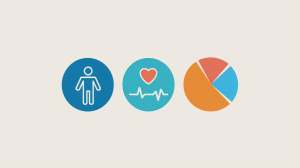
If you’ve ever felt a wave of confusion looking at your health insurance options, you’re not alone. Terms like “deductible,” “premium,” and “out-of-pocket maximum” can feel like a different language. One of the most common and often misunderstood options is the High-Deductible Health Plan, or HDHP.
Perhaps you chose an HDHP for its lower monthly cost, or perhaps it was the only option your employer offered. Whatever the reason, understanding how these plans work is crucial in taking control of your healthcare spending. This guide will break down what you need to know about HDHPs in simple, straightforward terms, so you can navigate your health and your wallet with confidence.
At its core, an HDHP is a health insurance plan that trades a lower monthly payment (the premium) for a higher upfront cost (the deductible). The “deductible” is the amount of money you pay for your medical care before your insurance company begins to share the costs.
To be officially classified as an HDHP by the Internal Revenue Service, a plan must meet certain minimum deductible amounts and maximum out-of-pocket limits, which are updated annually. For example, in 2023, a plan needed a minimum deductible of at least $1,500 for an individual or $3,000 for a family to qualify as an HDHP. The total yearly out-of-pocket expenses—which include your deductible, copayments, and coinsurance—could not be more than $7,500 for an individual or $15,000 for a family.¹ These numbers ensure that while your initial costs are high, there’s a cap to protect you from truly catastrophic expenses.
Thinking about your HDHP in three distinct phases can make it much easier to understand.

When the plan year begins, you are responsible for 100% of your medical costs until you meet your deductible. This includes doctors visits, lab tests, and, importantly, prescription drugs. The one major exception is preventive care. Under the Affordable Care Act (ACA), most HDHPs are required to cover in-network preventive services, like annual physicals, routine screenings, and immunizations at 100%, even before you’ve met your deductible.²
Once you have paid enough out-of-pocket to meet your deductible, you enter the coinsurance phase. During this phase, you and your insurance plan share the cost of your care. A common split is 80/20: Your insurance plan agrees to pay 80% of the cost, and you pay the remaining 20%. You’ll continue to share costs this way for every covered service.
Every dollar you spend on your deductible and coinsurance counts toward your annual out-of-pocket maximum. This is the absolute most you will have to pay for covered, in-network care in a year. In-network care means you agree to see physicians contracted with your insurance plan, not physicians of your choosing. Once you hit this limit, your insurance plan pays 100% of all covered medical costs for the rest of the plan year. This is a crucial safety net that protects you from boundless medical bills in the case of a major illness or catastrophic injury.
HDHPs can be a great financial tool for some, but they aren’t the right fit for everyone.
Potential Pros:
Potential Cons:
The single biggest advantage of an HDHP is eligibility for a Health Savings Account (HSA). An HSA is a special savings account that you own. It allows for an additional financial benefit called the “triple tax advantage”⁵::
Unlike other accounts, the money in your HSA is yours to keep forever. It rolls over year after year and stays with you even if you change jobs or insurance plans. Many people use it as both a healthcare fund and a long-term retirement savings plan.
It’s easy to mix up an HSA with another common workplace benefit: the Flexible Spending Account (FSA). While both let you use pre-tax money for healthcare costs, they have crucial differences. Having a clear understanding of both plans will help you determine which is right for you. Below is a table to help you differentiate the two plans.

Table 2: HSA vs. FSA: Key Differences at a Glance⁵
| Feature | Health Savings Account (HSA) | Flexible Spending Account (FSA) |
| Eligibility | Must be enrolled in a qualified High-Deductible Health Plan (HDHP). | Offered by an employer; you don’t need an HDHP. |
| Account Ownership | You own the account. It’s portable and goes with you if you change jobs. | Your employer owns the account. You typically lose the funds if you leave your job. |
| Contribution Rollover | Funds roll over every year. There is no “use-it-or-lose-it” rule. | Generally, you must use the funds by the end of the plan year, though some plans offer a small carryover or grace period. |
| Contribution Limits (2024)¹ | $4,150 for an individual, $8,300 for a family. | $3,200 per employee. |
| Investment Potential | Yes, funds can often be invested in mutual funds, similar to a 401(k). | No, funds cannot be invested. |
Understanding your HDHP is critical to being proactive about your health care costs. During the initial “deductible phase,” you are a cash-paying customer for most of your prescriptions and health care. Every dollar you spend comes directly from your own pocket until the deductible amount is met. Pretax Health Savings Accounts can act as an emergency pool of funds for medical needs and other health care costs, and can make your HDHP a more desirable option.
By searching for your medication on LowerMyRx before you go to the pharmacy, you can find significant discounts that lower your out-of-pocket spending. Saving money on each prescription helps you preserve the funds in your HSA for other medical needs and makes the journey toward meeting your deductible less of a financial burden. Understanding an HDHP may help lower the cost of medical care for some, and LowerMyRx allows you to save more of your hard-earned dollars with every prescription.
This is for informational purposes only. For advice, consult an insurance or healthcare professional.
